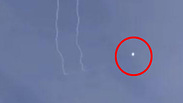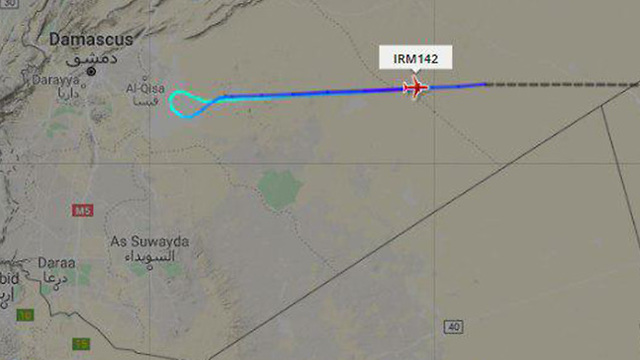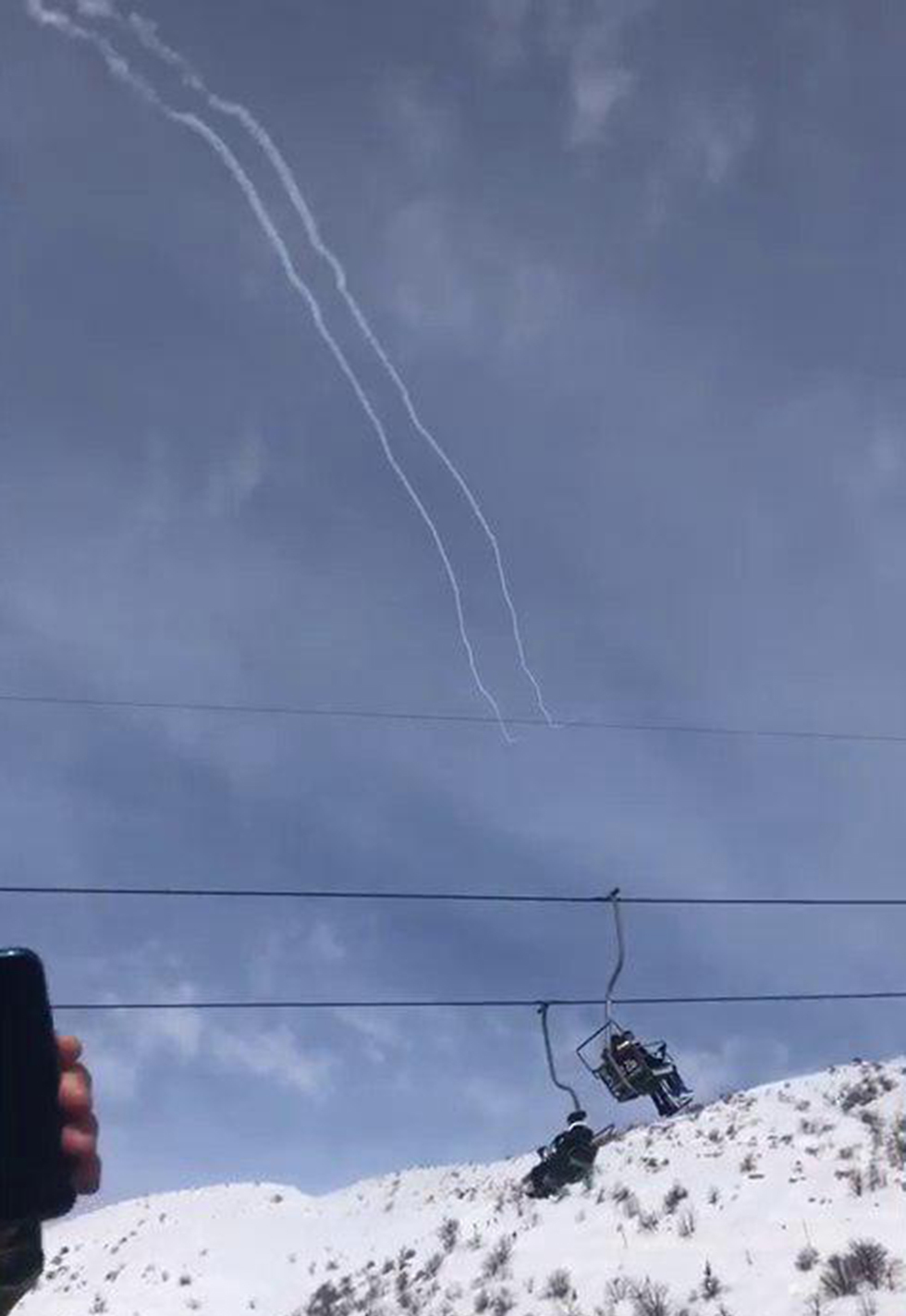
Both the exceptional circumstances surrounding Sunday's attack near Damascus, which was attributed to Israel, and Syria's response may indicate a new direction in "the war between wars" currently been waged, and raise a number of questions about the objectives of the attacker and the responder.
The Russian army in Syria said it was Israeli planes that launched air-to-surface missiles over the Mediterranean Sea, towards targets in the area of Damascus International Airport. Contrary to most of the attacks previously attributed to Israel, for which Prime Minister Benjamin Netanyahu took partial responsibility, Sunday's attack took place in the afternoon, during daylight hours. At the time of the strike, an Iranian passenger/cargo plane was coming in for landing at Damascus International Airport. The plane belonged to the Iranian aviation company Mahan Airlines.
Mahan's headquarters are in Tehran; the company operates from Imam Khomeini Intenrational Airport and has a large fleet of aircraft, some 60 in total, most made in Europe. In 2009, the company was found to have unlawfully taken three Boeing 747s from the European company Blue Sky Airlines, using forged bills of sale. The company refused to return the planes, hardly surprising, given the American boycott on the sale of US-made aircraft of any kind to Iran since the 1979 Islamic Revolution.
Mahan flies both domestic and international flights, which is interesting given that in December 2011, the US Treasury declared it an embargoed company on the grounds that it supports terrorism and serves the Iranian Revolutionary Guards. In announcing its embargo on the company, the US Treasury said it primarily serves the Revolutionary Guards' elite Quds Force, which operates in the international and Middle Eastern arenas, is assisting Hezbollah and the Syrian army, operating against Israel and trying to establish itself in Syria.
Last month, Germany officially announced that it planned to ban Mahan Airlines from landing in its territory, after receiving evidence that the company's planes, including Boeing 747s, had transferred Quds Force weapons and operatives to Syria.
With this in mind, it is fair to assume that the action attributed to Israel was intended to deter the Mahan plane, which took off in Tehran, from landing in Damascus. This assumption can be reinforced by the fact that this was the only plane due to land at Damascus airport.
The plane was close to touch down when the strike took place, and it is reasonable to believe that Israel alerted the Russians to the attack and the Russians directed the craft back to Tehran. The suspicion that the entire operation was to stop the plane landing is strengthened by the fact that the usual Syrian sources, such as the London-based Syrian Observatory for Human Rights, or other Syrian and Lebanese sources did not report the strike nor distribute photographs of Israeli missiles hitting their targets.
Syrian television even boasted that 100 percent of the Israeli missiles were intercepted by the Syria's anti-aircraft system, which while not necessarily the truth, could indicate not that the missiles failed to hit significant targets, but rather this purely solely a warning or deterrent about the plane itself.
There is no way of knowing who or what was in the belly of the plane, but one could sensibly assume that whoever attacked it was interested in sending it back from whence it came - with a warning for whoever sent it. All of this was apparently done in order not to irritate the Russians, and to bring them onboard with the operation.
The Syrian response is also interesting. The reaction was surface-to-surface rocket fire, apparently under cover of a barrage from an anti-aircraft missile battery launched in order to mislead Israel. AMid the anti-aircraft fire was a surface-to-surface rocket aimed at Mount Hermon. The anti-aircraft missile fire only came after the attacking planes were out of range, or even when they had already returned to their base in Israel. Assuming, of course, that it was Israel who carried out the attack.
The Syrians have previously fired anti-aircraft missiles into Israeli territory, even though they had no target they could realistically hit. To Israel, Sunday's was a reprisal attack aimed at harassing and wearing down its population, creating panic and possibly harming tourism on the Golan. This was the case a few weeks ago, when Israel attacked and Syrian surface-to-air missiles were fired at the Jewish state, even though they did not hit. And this was the case Sunday, when the rockets brought down by Iron Dome could be clearly seen in the skies over Mount Hermon, while thousands enjoyed the snow below.
This method of retaliation shows that the Assad regime is apparently looking for ways to respond to the attacks attributed to Israel, especially after Israel lifted much of the veil of ambiguity over these strikes.
This removal of the veil of ambiguity by then-IDF chief of staff Gadi Eisenkot and Prime Minister Netanyahu is intended to make the Russians deter the Iranians themselves, and make it clear to Tehran that Quds Force commander Qassem Suleimani is dragging them into a perilous escapade. He is trying to avenge the damage to the prestige of his regime, apparently without pushing Israel too hard, and the Russians are pressuring him not to do anything that could lead to a broad confrontation.



















